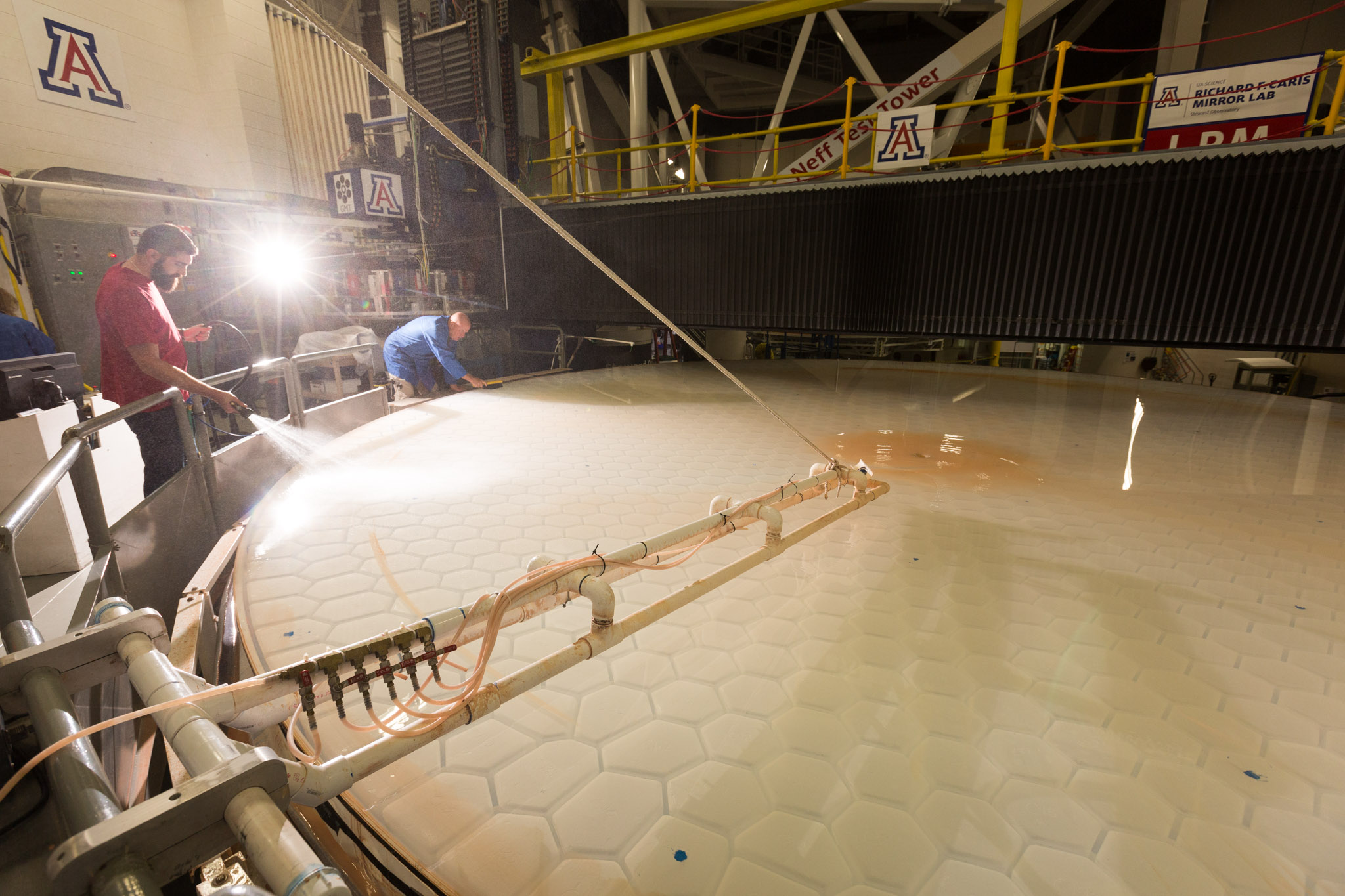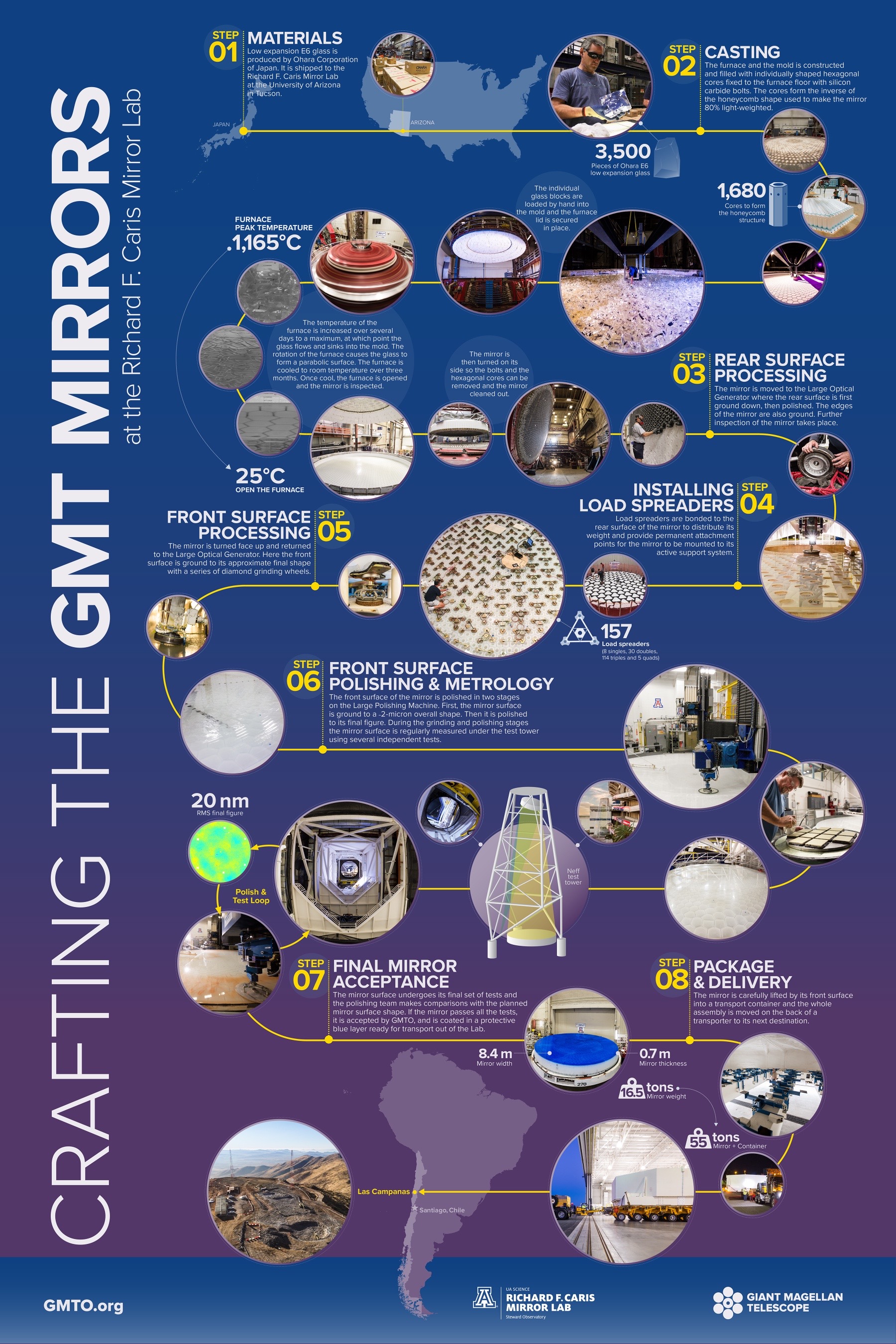Giant Magellan Telescope Project Finishes 2nd Primary Mirror

Two of the next-generation Giant Magellan Telescope's (GMT) seven huge primary mirrors are now done.
Technicians at the University of Arizona's Richard F. Caris Mirror Lab have finished polishing the front surface of a second 27.6-foot-wide (8.4 meters) GMT mirror, a precise and exacting process that took 10 months.
The completed mirror was transported from the lab to a temporary storage facility at the Tucson Airport, joining mirror segment No. 1, Giant Magellan Telescope (GMT) officials announced today (July 31).
Related: Gallery: The Giant Magellan Telescope Envisioned in Chile
The GMT is taking shape on a mountaintop in the Chilean Andes. The telescope will feature seven primary mirrors, which together will create a light-collecting surface 80 feet (24.5 m) wide. The powerful scope will allow astronomers to investigate some of the cosmos' deepest mysteries — the nature of dark matter and dark energy, for example, and whether Earth life is alone in the universe.
The seven GMT primary mirrors are a marvel of engineering. Each one takes years to make, from the initial casting in a big, rotating furnace through multiple stages of grinding and polishing. The surfaces of the completed mirrors are perfect to within 25 nanometers — about 1 millionth of an inch.
Three of the remaining five primary mirror segments have been cast and are in various stages of processing at the Richard F. Caris Mirror Lab. The remaining two are expected to be be cast in 2020 and 2021.
Breaking space news, the latest updates on rocket launches, skywatching events and more!
GMT will probably begin operations with just four or five of the primary mirrors installed, project representatives have said. That's expected to happen in 2026, and the scope should be at full strength by 2028.
The primary mirrors are too big to fit in a plane, so they will eventually be shipped to Chile by sea, through the Panama Canal. They'll leave via the Port of Houston, GMT representatives said.
GMT is one of three megascopes expected to come online in the mid-2020s. The Extremely Large Telescope will observe the heavens from Chile as well, whereas the Thirty Meter Telescope will be built on Hawaii's Mauna Kea volcano.
The three giant scopes should help researchers make groundbreaking discoveries for decades to come, said Robert Shelton, president of the GMTO Corp.
"These observatories are going to last 50 years," Shelton told Space.com a few months ago.
- Gallery: The Giant Magellan Telescope Envisioned in Chile
- Photos: Casting Mirror No. 5 for the Giant Magellan Telescope
- 10 Biggest Telescopes on Earth: How They Measure Up
Mike Wall's book about the search for alien life, "Out There" (Grand Central Publishing, 2018; illustrated by Karl Tate), is out now. Follow him on Twitter @michaeldwall. Follow us on Twitter @Spacedotcom or Facebook.

Michael Wall is a Senior Space Writer with Space.com and joined the team in 2010. He primarily covers exoplanets, spaceflight and military space, but has been known to dabble in the space art beat. His book about the search for alien life, "Out There," was published on Nov. 13, 2018. Before becoming a science writer, Michael worked as a herpetologist and wildlife biologist. He has a Ph.D. in evolutionary biology from the University of Sydney, Australia, a bachelor's degree from the University of Arizona, and a graduate certificate in science writing from the University of California, Santa Cruz. To find out what his latest project is, you can follow Michael on Twitter.

